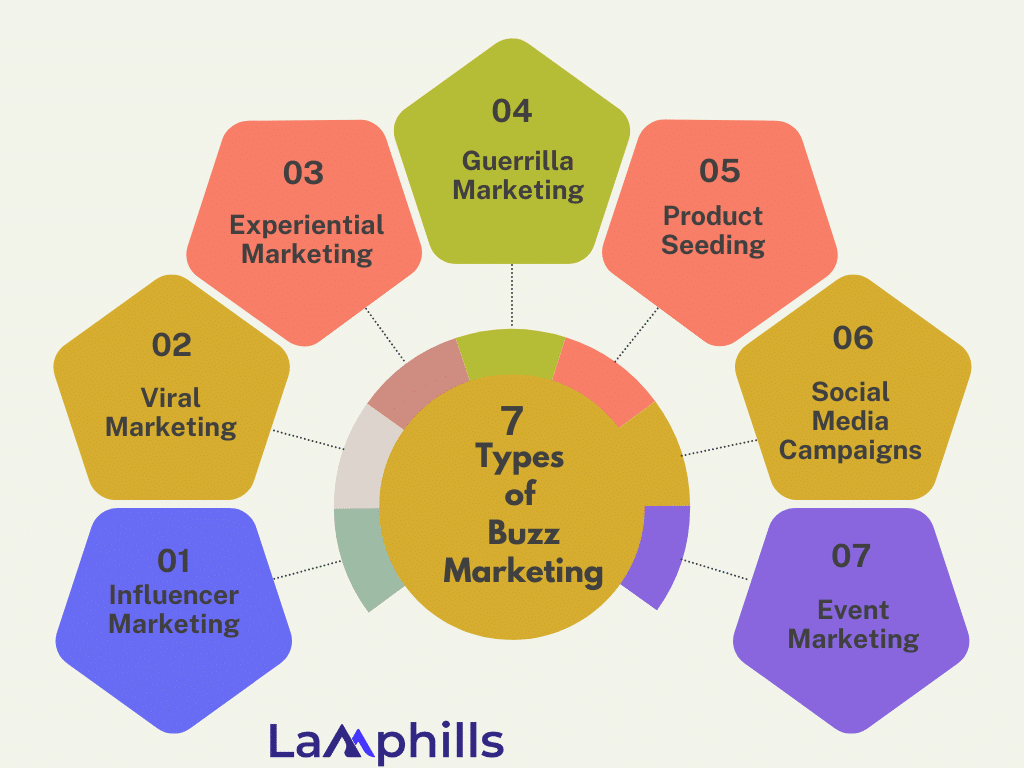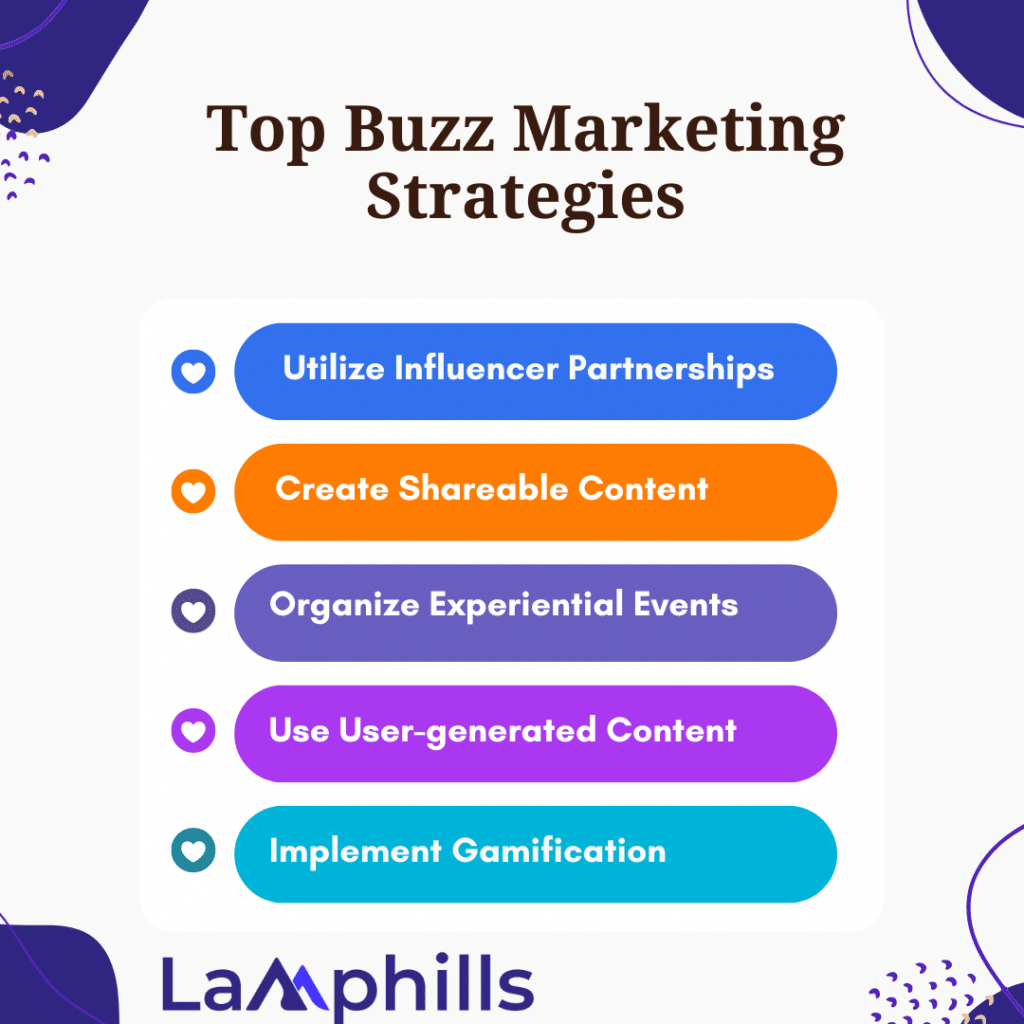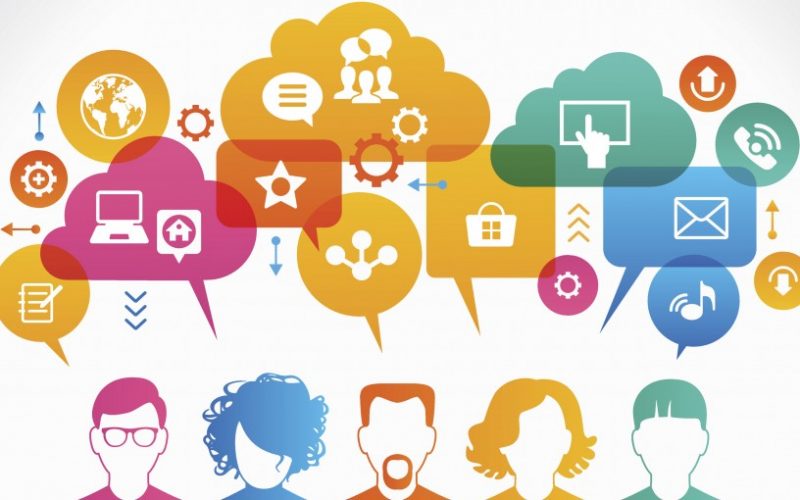When I first learned about buzz marketing, I was intrigued by the idea of generating a tornado of excitement around a product or service. I recall the first campaign I saw that genuinely went viral; it wasn’t simply an advertisement; it was an event that everyone was talking about. This marketing strategy piqued my interest, so I studied everything there was to know about creating buzz. In this article, I’ll discuss some of the most effective buzz marketing methods for 2024, as well as personal experiences and observations that have helped form my understanding of this dynamic marketing strategy.
What is Buzz Marketing?
Buzz marketing is a method that aims to build excitement and word-of-mouth promotion for a product or service. It uses viral content, influencer alliances, and inventive marketing to generate a “buzz” and get people talking. This strategy capitalizes on the strength of social proof and the natural human desire to share fresh and exciting news.
The Importance Of Buzz Marketing
Creating a buzz around your business can result in increased visibility, engagement, and, eventually, sales. According to a Nielsen survey, 92% of consumers prefer referrals from friends and family over any other sort of promotion, emphasizing the importance of word-of-mouth marketing. Furthermore, buzz marketing can greatly improve your brand’s online presence and search engine rankings by increasing social signals and backlinks.
Key Takeaways
- Influencer Partnerships: Work with influencers who are truly aligned with your business.
- Shareable material: Create fascinating, amusing, and emotionally appealing material.
- Experiential Events: Organize unforgettable events that create an impact and promote sharing.
- User-Generated Content: Encourage customers to produce and share content that is relevant to your business.
- Gamification: Use game-like aspects to make your marketing more engaging and pleasurable.
Types of Buzz Marketing
Buzz marketing entails generating excitement and word-of-mouth promotion for a product or service. Brands can employ different buzz marketing methods to increase attention and engagement with their audience. Here are some of the most useful types:

#1. Influencer Marketing
Using influencers to promote your brand among their fans. Influencers might be celebrities, industry experts, or micro-influencers with a sizable following.
Example: Glossier, a cosmetic firm, leverages influencer marketing by collaborating with beauty influencers who share their personal experiences with Glossier products. This method has helped Glossier create a devoted consumer base.
Read Also: 10 Most Resounding Influencer Marketing Fails in History (Lessons to Learn)
#2. Viral Marketing
Creating material that can be easily shared on social media and other internet channels. Viral marketing is based on content that resonates strongly with the audience, driving them to share it.
Example: The ALS Ice Bucket Challenge is a prime example of viral marketing. The campaign encouraged people to pour a bucket of ice water over their heads and dare others to do the same, therefore raising awareness and funding for ALS research.
#3. Experiential Marketing
Creating memorable, engaging experiences in which customers may interact with a business concretely. These events frequently generate buzz on social media and word of mouth.
Example: Red Bull’s “Stratos” event, in which Felix Baumgartner jumped from the edge of space, is an excellent example of experiential marketing. The incident drew global interest, resulting in substantial media coverage and social media buzz.
#4. Guerrilla Marketing
Using innovative, low-cost marketing strategies to have a significant effect. Guerrilla marketing frequently includes unexpected or memorable exploits in public locations.
Example: Coca-Cola’s “Happiness Machine” campaign installed vending machines in various locations that gave unexpected presents such as flowers and pizzas, in addition to the regular Coke. People’s delighted emotions were filmed and shared, generating a lot of buzz.
#5. Product Seeding
Providing products to key influencers, celebrities, or early adopters to generate buzz before to wider availability. Product seeding can build anticipation and excitement for a new product.
Example: Apple frequently distributes new goods to tech reviewers and influencers before their official debut. This method contributes to increased hype and anticipation among a larger audience.
#6. Social Media Campaigns
Using social media channels to launch campaigns that encourage user participation and sharing. These advertisements frequently incorporate hashtags, challenges, or interactive content to engage their audience.
Example: Coca-Cola’s “Share a Coke” campaign personalized bottles with popular names and encouraged customers to share Coke with friends and family. The initiative went viral on social media, with millions of people sharing photographs of their personalized bottles.
Read Also: The Campaign Optimization Secrets Big Brands Don’t Want You to Know
#7. Event Marketing
Organizing events such as product launches, pop-up shops, or live demos to generate buzz and engage with customers. Events can be actual or virtual, and they frequently include interactive aspects.
Example: Nike’s “Run Club” activities invite members to join communal runs in a variety of locales. These events not only promote Nike items but also develop a sense of community among attendees, resulting in word-of-mouth promotion.
Read Also: Event Branding Examples: Ideas to Inspire Your Next Big Event
How to Create a Buzz Marketing Campaign
Only a few steps separate you from creating the ideal campaign for your brand. Let’s get started with our step-by-step tutorial, which will supply you with enough information to launch your buzz marketing campaign right immediately.
#1. Research your audience
Before developing any product or campaign, you need to better understand your clients’ tastes and demands. Furthermore, buzz marketing broadens your audience, necessitating more effort to anticipate and address their wants. When developing content, prioritize the needs of your customers.
#2. Create and distribute teasers to your audience
To predict your audience’s reaction to your new product and campaign, you need a teaser that is valuable and relevant to them. Once you’ve released your teaser, you’ll be able to monitor how people react to your impending offering. Excitement, interest, and attentiveness suggest that clients are ready to adopt your product. In addition, you will receive more attention, enhance your outreach, and grow your subscriber base.
#3. Consider developing a brand hashtag
Hashtags are incredibly useful for new advertising initiatives. A branded hashtag allows individuals to find the information they need on social media, while brands may increase social media engagement and recognition. Once the campaign is launched, you can watch how clients respond.
#4. Increase interest and deliver value
Once you’ve covered the basics, you’ll need to develop a compelling content strategy and demonstrate the value of your product. To attract and engage your target audience, ensure that you provide the most important facts about your offer.
#5. Make a video
Video advertising for your new campaign is an amazing buzz marketing strategy. According to studies, 54% of consumers prefer to watch videos from brands since video content is more engaging and memorable. In this manner, you can be confident that more people will remember your business.
#6. Look for thought leaders in your sector
To reach a large audience, you need a brand ambassador who will effectively market your product. In the buzz marketing industry, brands select influencers. Why? They have a sizable following, popularity, credibility, public trust, and influence. Consider asking an opinion leader in your niche to promote your product to their followers, explain its benefits and worth, and endorse it.
If you still don’t have any strong ideas for your buzz marketing campaign, let’s look at some instances for inspiration.
Top Buzz Marketing Strategies for 2024

#1. Utilize Influencer Partnerships
Influencers can reach a huge, engaged audience. Partnering with influencers who are compatible with your business can help amplify your message and generate genuine buzz. When choosing influencers, look for people who have a true relationship with their audience and can truly advocate your product.
In a recent campaign, we collaborated with micro-influencers in the fitness industry to promote a new range of sports clothing. These influencers shared their personal experiences with the items, resulting in genuine content that resonated with their audience and produced major buzz.
#2. Create Shareable Content
Highly shareable content can easily go viral, spreading your message far and wide. Create compelling movies, memes, and interactive material that consumers will want to share with your social networks. Humor, emotional appeal, and relatability are important factors in making material shareable.
Our client, a beverage manufacturer, created a series of amusing short videos showcasing their product in unexpected scenarios. These videos were widely shared on social media, which resulted in high engagement and brand recognition.
#3. Organize Experiential Events
Experiential marketing events provide unforgettable experiences that people enjoy talking about and sharing. These events can include pop-up stores, interactive exhibits, live demonstrations, and flash mobs. The goal is to provide an amazing experience that leaves an indelible impact.
Example: To debut a new tech gizmo, we prepared a pop-up event with interactive demos. The event received widespread coverage from local media and was widely shared on social media, generating tremendous buzz.
#4. Use User-generated Content
Encourage your customers to develop and share content about your business. User-generated content (UGC) may include reviews, images, videos, and social network contributions. UGC delivers social evidence while also increasing engagement and trust.
Example: We launched a UGC campaign for a cosmetics business, encouraging customers to upload before-and-after photographs with a branded hashtag. This campaign not only produced a lot of real content but also fostered a sense of community and passion for the brand.
#5. Implement Gamification
Gamification is the process of introducing game aspects into your marketing plan to engage and motivate clients. This can include challenges, quizzes, competitions, and incentive systems. Gamification may make your marketing more engaging and enjoyable, resulting in more engagement and shares.
Example: A travel company we collaborated with created a gamified campaign where users could earn points for sharing their travel experiences on social media. The top point scorers received free excursions, fostering a competitive and engaged environment that generated a lot of buzz.
Buzz Marketing vs Traditional Marketing
The primary distinction between buzz marketing and traditional marketing is that buzz marketing relies solely on the modern social media consumer to generate enthusiasm and exposure for an upcoming product. Meanwhile, traditional marketing methods rely solely on leveraging available marketing channels to gradually draw the attention of new clients to make them aware of a product, service, or business that they have not previously heard of.
To summarize, buzz marketing distinguishes itself from traditional marketing through:
- Focusing on marketing items and services to consumers using social media rather than a holistic marketing plan
- Cultivating trust by using a consumer’s audience and reputation, while a traditional marketing plan focuses on public perception and current reviews.
- Allowing customers to control the narrative to gain from their influence and reach, rather than building viral marketing efforts designed to be dispersed across various channels
Having said that, consumers have become accustomed to buzz marketing, making it simple for them to identify a campaign that sounds inauthentic or too much like a sales pitch. When employing a buzz marketing strategy, it is critical to control the narrative and harness influencers who genuinely believe in the product or service being promoted.
One of my most memorable buzz marketing experiences was working on a campaign for a new product launch. We decided to launch a teaser campaign with mystery social media posts and a countdown to the big revelation. The anticipation grew over weeks, and by the time we revealed the product, the enthusiasm was tangible. The marketing not only increased early sales but also established a dedicated consumer base eager for more.
Conclusion
Buzz marketing is highly effective for building enthusiasm and engagement around your brand. In 2024, you may generate buzz that stands out by leveraging influencer partnerships, creating shareable content, holding experiential events, utilizing user-generated content, and integrating gamification. Are you prepared to take your marketing to the next level and generate a buzz everyone will speak about?
Related Articles
- Level Up Your Marketing Strategy With Hyper-personalization
- What is Exactly Cause-Related Marketing? (+ Practical Examples)
- 13 EMOTIONAL APPEAL ADVERTISING EXAMPLES THAT YOU CAN COPY
- Persuasive Advertising Strategies for 2024: What Works and What Doesn’t
- Brand Advertising: Elevating Your Brand Awareness






